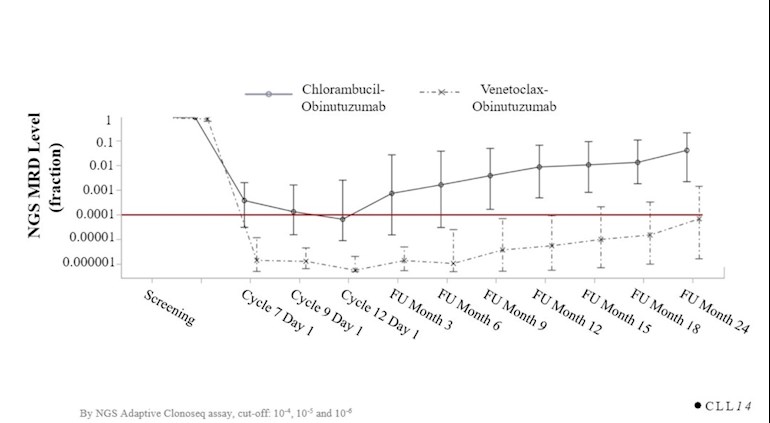In this trial, treatments were given for 12 months. Note the decreasing slope of the MRD levels until Cycle 12 (end of treatment), then the positive slope of MRD levels up to 24 months after treatment. Also note the depth of response with V+O compared to Chl+O, but similar slope profiles (MRD increases when treatment stops).
The horizontal red line is U-MRD4
(<1 cell in 10,000). The lowest level is U-MRD6 (<1 cell in 1,000,000). (Sometimes we see these as percentages, where U-MRD4 is 0.01% - here it is shown in absolute terms, 0.0001.)
My interpretation: Is 12 months of V+O enough?
Slide from the oral presentation: ash.confex.com/ash/2019/web...
